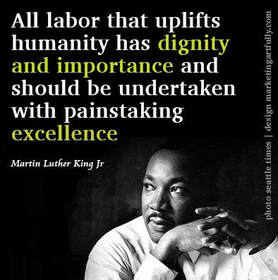How prepared is your organization to effectively manage work related injuries? Being proactive with a transitional work program for when something does happen makes good business sense.
What is transitional work? Why is it important for an organization to have a program in place? For some, these might seem like simple questions with simple answers; however, it depends on many factors like organization size, culture, nature of the business, and available resources.
Transitional work has three distinct formats. Regardless of which type of transitional work is being provided, the key points are that they are time-limited (temporary) opportunities, require stakeholder collaboration, and provide meaningful and productive work within the worker’s current capabilities.
What is transitional work? Why is it important for an organization to have a program in place? For some, these might seem like simple questions with simple answers; however, it depends on many factors like organization size, culture, nature of the business, and available resources.
Transitional work has three distinct formats. Regardless of which type of transitional work is being provided, the key points are that they are time-limited (temporary) opportunities, require stakeholder collaboration, and provide meaningful and productive work within the worker’s current capabilities.
| The most common type of transitional work is the gradual return. The worker is transitioning back to work with some modifications in tasks, hours, or workdays. The goal is to progressively increase all of these until returning to normal work duties and schedule. Within the scope of transitional work is modified duties. This is where the worker is following their usual schedule and either receiving support for some of the required tasks or having some of the work eliminated to support recovery. |
The third type is the one that requires the most creativity and flexibility, and this is alternate work. In this scenario, the worker is not capable of performing their usual duties due to the injury so is being provided other tasks. This category of transitional work is the one that employers struggle with the most. This could be due to employers not being aware of their rights but most often because there has not been the time or energy devoted to identifying the tasks that could be available when the need arises. Enter the job jar, wish list, or “if only I had an extra body” list.
It is important to take the time to develop documentation for your transitional work program and to educate your workforce. Your first aid attendants, supervisors, and managers need to be aware for identification of those who could benefit from these temporary opportunities. Your worker population needs to understand the program requirements so they participate. When a worker is sent for medical aid resulting from a workplace incident, the first aid attendant is the usual point of contact and could distribute documentation about your transitional work program to the departing worker. The engaged and informed employee will request the health care provider complete the documentation at that medical visit as they understand that the documentation is a communication tool that maintains their pay but also ensures the work provided is aligned with their current capabilities.
Transitional work will be adjusted as the worker recovers as the objective is a full time and full duty return to the pre-injury job. Maintaining contact with the worker and documenting the check-ins will allow you to revise the work as needed.
A clear and promoted transitional work program will save you money by avoiding time loss claims and demonstrate to your workforce that they are valued. This increases retention; lower turnover means less recruitment and training costs.
Transitional work will be adjusted as the worker recovers as the objective is a full time and full duty return to the pre-injury job. Maintaining contact with the worker and documenting the check-ins will allow you to revise the work as needed.
A clear and promoted transitional work program will save you money by avoiding time loss claims and demonstrate to your workforce that they are valued. This increases retention; lower turnover means less recruitment and training costs.



 RSS Feed
RSS Feed